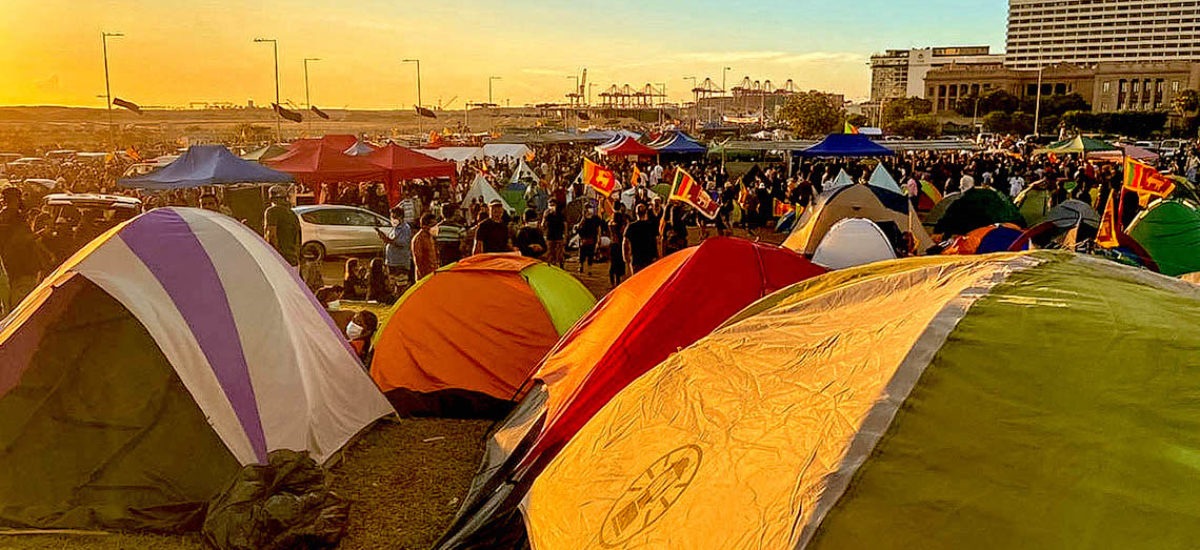Photo courtesy of Newscutter
A short documentary film, The People’s Voice Is Louder, featuring the works of four lens-based practitioners from different parts of the country captures the energy, passion and desperation of the people’s uprising of last year and presented an alternative view to the violent images captured by the international media. It was screened in Colombo last month.
The film is the result of a documentary photography project initiated by the Goethe-Institutes Chennai and Sri Lanka in collaboration with The Chennai Photo Biennale Foundation. Each photographer was supported while capturing their surroundings at the beginning of 2022. Naturally, almost all the photographers caught the sheer desperation on the streets – long fuel and gas queues snaking along the otherwise deserted roads. As the crisis worsened, people spilled out onto the streets and later congregated at the main central hub of the protest site – GotaGoGama dubbed GGG. Many of the photographers followed the throngs of people to GGG. Images of crowds carrying slogans, young and old, from all walks of life became the focus for some.
The documentary was shown at several locations across India as part of the public programme of the Kochi-Muziris Biennale in Kerela and at the Ahmedabad Photography Festival before the images were exhibited as a curated show at the Alliance Française in Madras. The work was well received and showed aspects missing from most international coverage of the protests. The images speaking not only of the state’s violent pushback of the protests but many softer, intimate moments where the tenderness of humanity, even in its most desperate state, shone through. An image of a father and daughter taking a breather by Lojithan Ram alongside images of labourers napping together by Riyal Riffai were all on view. This stood in stark contrast to the violent and chaotic images that the rest of the world associated with the protest movement.
Each photographer had their own distinct narrative of the protests. Nayanahari Abeynayake, a photographer from Galle, began the project documenting the long fuel queues in her home town. Familiar scenes of the iconic Galle Fort were the backdrop for many of her photographs. She later moved to Colombo to document GGG. Her photographs are interesting as they oscillate between showcasing the large number of demonstrators and the spaces in between, featuring many objects that became synonymous with the protest movement. One image shows an empty protest ground during a monsoonal downpour with posters of journalists who were either intimidated or lost their lives being the only evidence of the protest. Another image features long lines of gas cylinders, the remnants of the economic crisis, lined up like spectators around the Galle cricket grounds. During a discussion on the documentary, Nayanahari explained that for so long many Sinhalese chose to look away when Tamils and Muslims were intimidated under majoritarian might. Referring to Martin Niemöller’s poem, First They Came, she spoke of the many journalists who lost their lives for this very reason. This became her motivation to get onto the streets and document the protests.
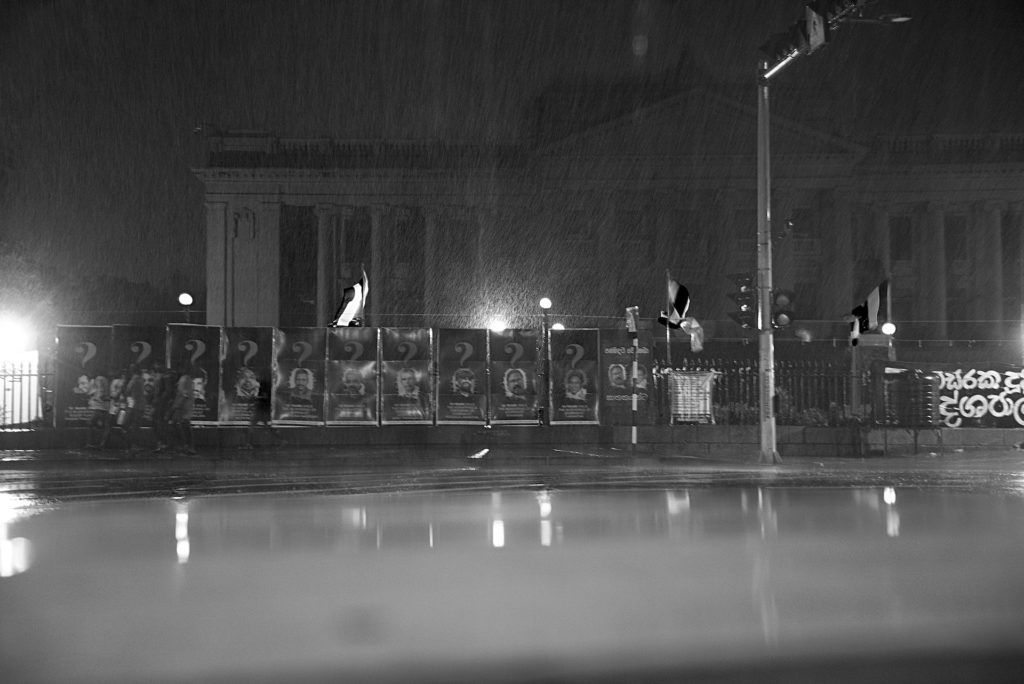
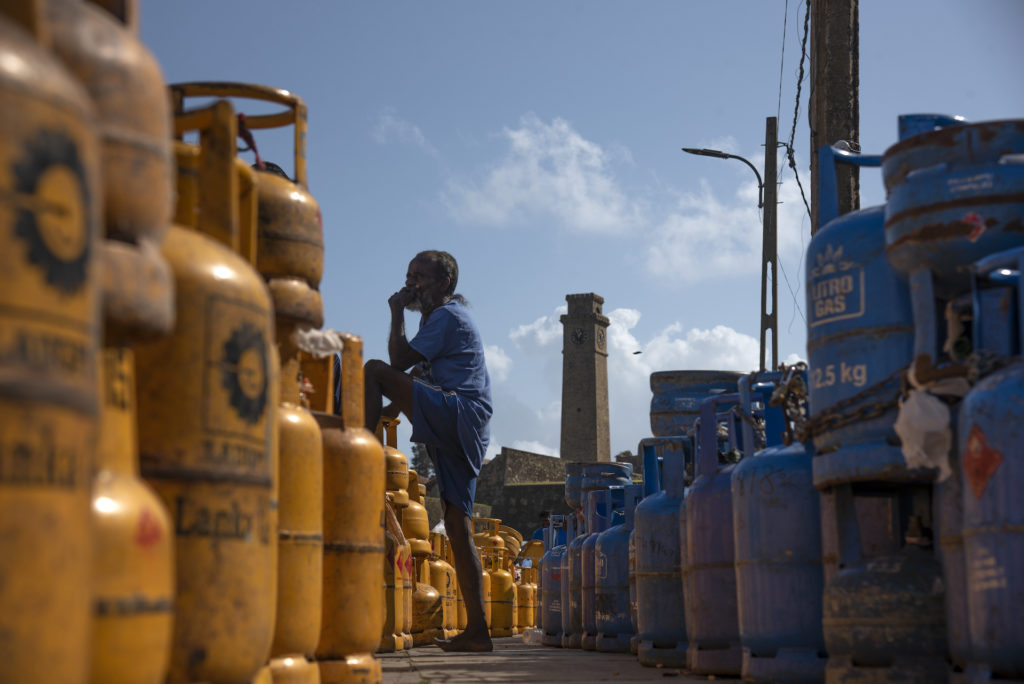
Lojithan Ram is a lens-based practitioner with a history in Fine Arts hailing from Batticaloa. He moved to Colombo a few years ago, therefore his images also document the protest site GGG. His works delve into the diversity in age of the movement, turning his lens towards families that flocked together with their children to the protest site. This is important as it contests the notion that the protest was purely a young people’s movement. Ram spoke about the importance of archiving, a process he has been engaged in with the We Are From Here project, documenting the urbanization and displacement of communities in Slave Island. For Ram, it was important to document GGG as a marker in our history, to capture the mood and feel of the nation and its people. This is particularly notable as one year later, this mood has completely been wiped out of the mainstream narrative. Walk along Galle Face Green and there is almost no sign of this being the main hub of the protest movement just one year ago.
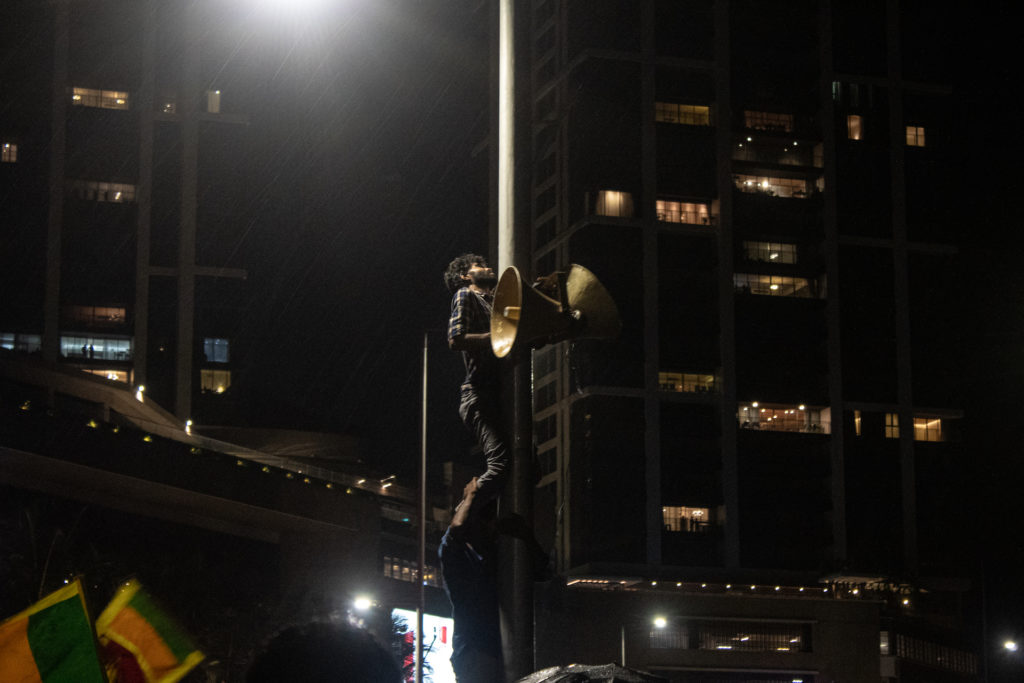
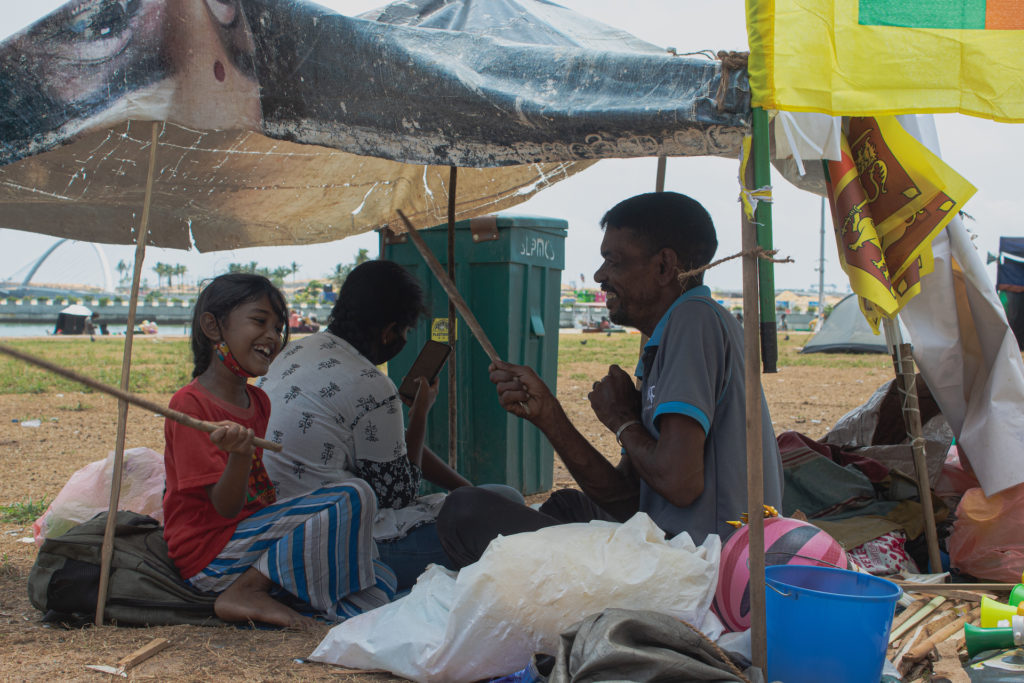
Riyal Riffai is a freelance photographer, bass guitarist and a photo journalist based in Colombo. Riyal began documenting the protest movement from the inception. When you look through his images you are aware at how Riffai chose to immerse himself in the movement or even join in the protest. This contradicts the older view that journalists should remain distanced from their subject matter to ensure objectivity. However, this view has been contested as many journalists and activists joined in the protests arguing that all good journalism has a point of view and pushes a narrative forth. Riffai’s images showcase the diversity of the protest site, documenting artist performances, LGBTQI+ parades and many people in the act of chanting against the large uniformed monolith of the military’s Special Task Force that became the backdrop for some of these images.
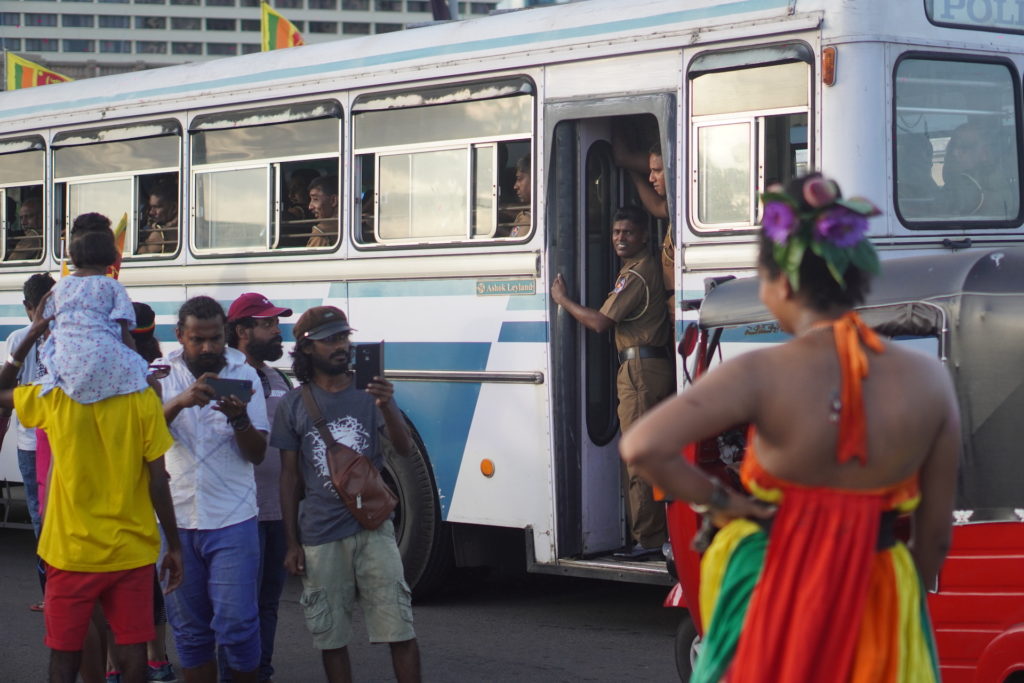
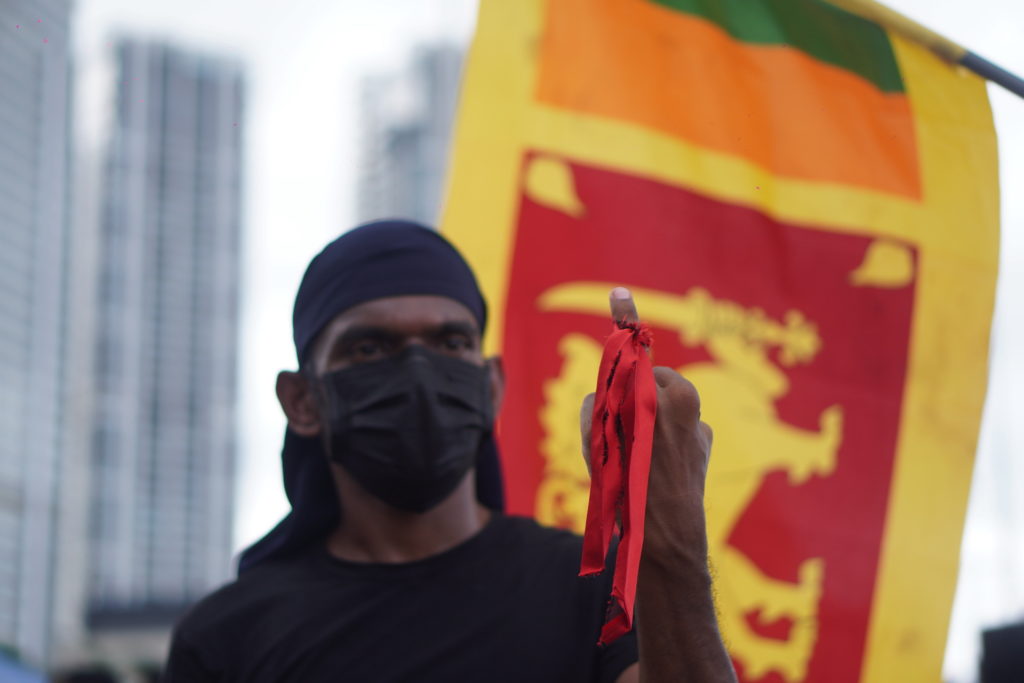
In contrast to the other photographers, Pirainila Krishnarajah’s work focuses on a specific demography in close vicinity to her own home town. Hailing from Jaffna with a background in Media Studies, Krishnarajah is a social activist and writer. She has directed a documentary on the transgender community of Jaffna. For this series, she chose to spotlight a fishing community in Kurunagar, a coastal village in Jaffna. This area has over 2,300 families dependent on fishing as their main profession. Her documentation spotlights the desperation and sadness of a community that has been struggling to provide for their families. Due to the lack of fuel, many of the fishing boats were unable to go out to sea. This devastated the community as they had no means of sustenance or making a living. The community was already struggling before the crisis because the sea was strewn with plastic waste, endangering the fish and the communities that depend on marine life. The catch is usually stored in ice to ensure freshness but with the daily power outages, only half formed ice was available, further exacerbating the difficulties. Krishnarajah’s choice of spotlighting this community is important. It highlights the struggle that under represented populations face and serves as an example on how the economic crisis affected all communities across the country.

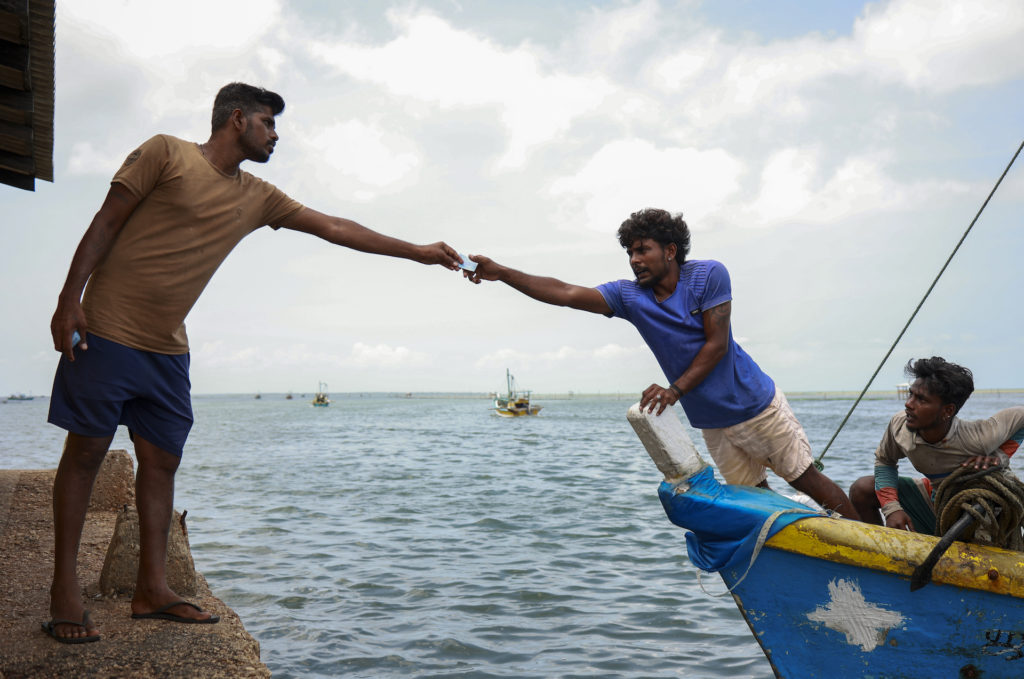
The screening of the documentary in Colombo was followed by a discussion with the audience. Among the points posed was the fact that the empowering and revolutionary nature of the uprising is almost made invisible today. While there were many demands being made during the protests, none or little have been fulfilled or even responded to. Instead, those still upholding the demands have been met with increasingly violent, brute force. Any efforts to continue the conversations that started in 2022 have either been suppressed by fear and intimidation tactics.
However, all was not lost, as the aragalaya stood as an important marker in our history. It revealed that change can be possible when people come together across social and economic strata to demand it. A senior journalist pointed out that the older generation had never dared to speak out about many situations in the past, commenting that perhaps our history could have played out differently if the previous generation had taken a stood against injustice.
Another audience member pointed out the importance of taking a stance, even when others have chosen to return to their usual ways. This could involve boycotting collaborators, social engagements and establishments that seem to have forgotten the people’s demands posed during the protest movement.
A year after these poignant images were taken, the country has seen many activists and protestors pursued by the state. There is a sense of fear to speak out, combined with the notion that the more privileged circles have dropped their calls for system change now that their basic necessities such as uninterrupted power and rationed fuel are secured again. This has been a way of placating some, while others still face continued struggles one year on.
Lojithan Ram answered a question, “What has changed since the aragalaya?” with a powerful critique of our society; “Nothing has changed” was the answer. There is a sense that, after the entire country seemed to unite against the common evil, we are now back to the modus operandi. Religious and ethnic tensions remain and are periodically stoked to instill suspicion of the “other”. The very people the country purged from power now return and are protected by the state.
These images and short documentary are an archive of memory. However, one cannot extinguish all that the aragalaya began, especially the discourse that it sparked, including the many questions about power structures, cyclic violence and intolerance of minorities. The hope is that the answers to these questions will still be sought by the current and coming generations even when the elite is pacified and the masses are intimidated into suppression.
View the documentary here: https://vimeo.com/852295941/07d095c6f3

